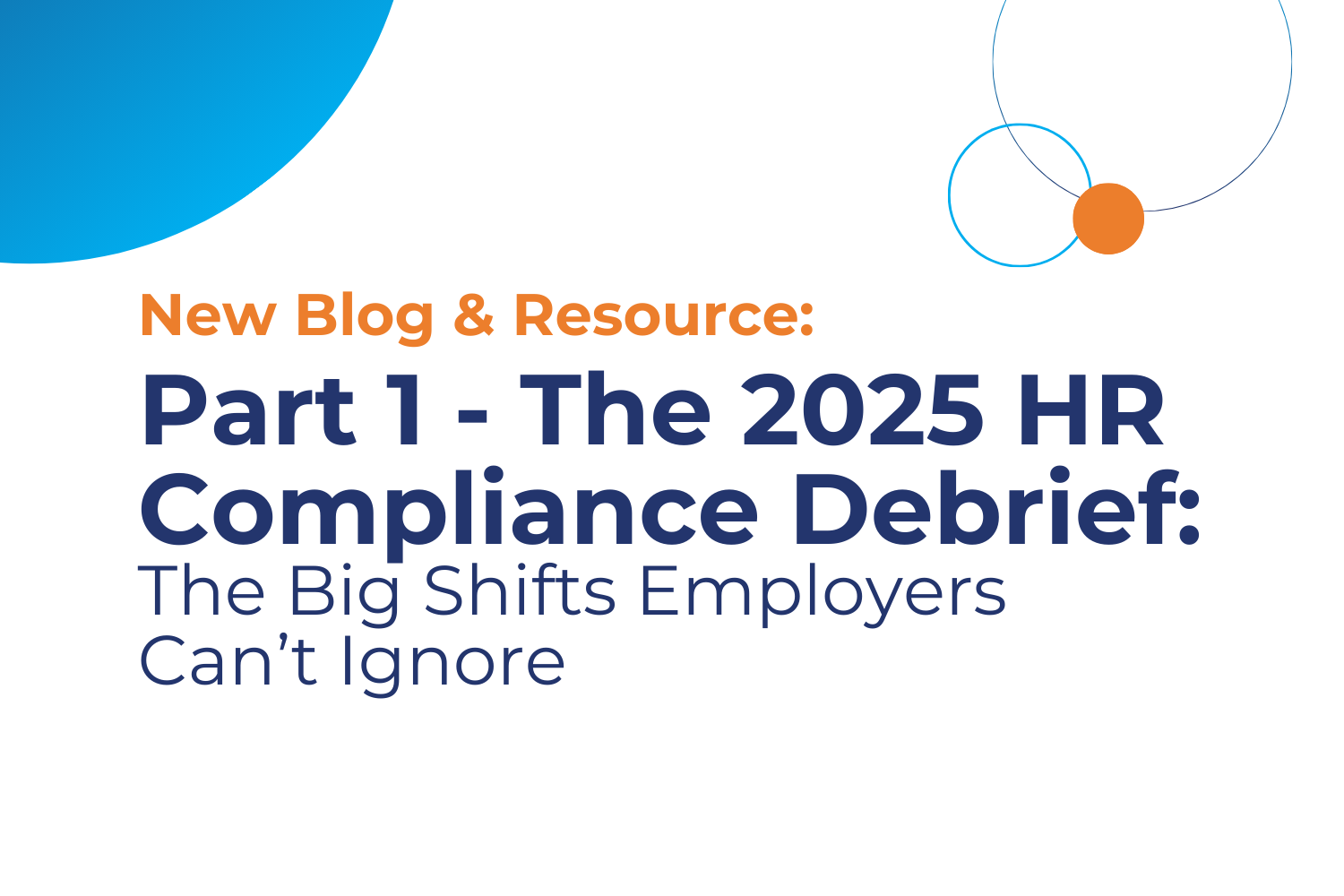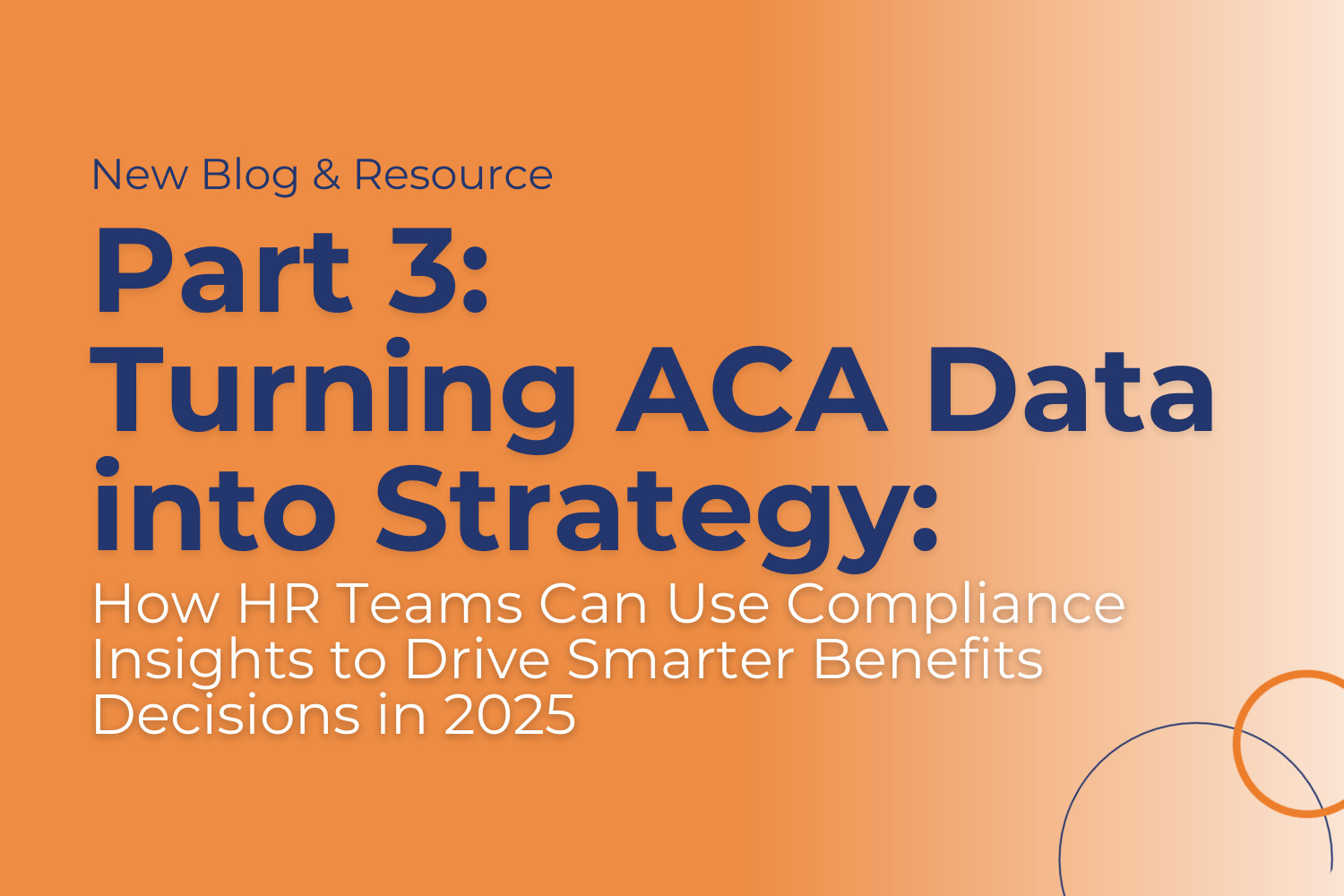Key 2020 Updates and Tips on ACA Requirements

Why ACA Requirements are Important: A Refresher
The ACA, signed into law in 2010 to ensure that workplaces of a certain size offer affordable group health insurance for their workers, can make employers scramble. ACA reporting can be an especially complicated process if they’re not aware of all ACA requirements, their payroll records are unorganized, or perhaps they’ve gone through major changes that a pandemic brings (furloughs, layoffs, rehiring, etc.). The motivation to get ACA filing right is the steep fines that can be incurred. While the individual mandate was repealed in 2018, employers that don’t offer coverage to eligible employees can be fined heavily. They can be fined up to $2,570 for each full-time employee (FTE) minus the first 30 if they don’t offer coverage at all. If employers offer coverage, but it’s not affordable by ACA standards, they could pay $3,860 per FTE that has gone to the government marketplace for insurance. Even if an employer offers coverage and it is affordable, filing on time is important. Late filings can get an employer up to $270 fees per form, all the way up to $3 million. If the government deems the employer as having intentionally filed late or incorrectly, they could be hit with fines of $530 per form, with no cap. To help employers avoid these fees, this article will cover some general strategy tips for ACA reporting, the latest HR updates for 2020 concerning the ACA, and updates or guidance that may be coming later as the ACA filing deadlines get closer.
Tips to Meet ACA Requirements
- Know all the ACA terms. The first building block to success is a foundation. Knowing all the ACA terms will be immensely helpful. These are the key terms that employers will encounter frequently in the ACA reporting process:
- ALE: Applicable larger employer. These are businesses or organizations that are subject to the ACA because of their size.
- FTE: Full time equivalent. This is the designation for employees that put in at least 30 ‘hours of service’ a week or 130 hours a month. ‘Hours of service’ is important because it requires employers to include sick and PTO time when they’re calculating an employee’s hours.
- Variable hour employee: The term for employees whose schedules are truly variable. You cannot reasonably determine what their hours will be like every week. Their hours must constantly fall above or below that 30 hour a week amount.
- Measurement period: This is also referred to as the ‘Lookback Period.’ This is the time used to determine if employees are FTE or variable.
- Stability period: This is the period during which an FTE must be eligible for affordable insurance coverage. Most employers use a 12-month period.
- Administrative period: The amount of time to calculate hours, have an open enrollment meeting, and get people signed up for insurance coverage.
- The Exchange (aka ‘the marketplace’): This is the term for the state or privately-owned market where employees who decline or aren’t eligible for their employer’s insurance coverage can get it on their own.
- Determine your business size per the ACA and the corresponding implications. Start by defining your total number of FTEs. They must: average at least 30 ‘hours of service’ per week or 130 hours per month. Calculate the total number of FTE by taking all employees that work 30 hours or more per week plus the monthly hours of all part-time employees. Divide this number by 120.
- Consider working with MP for ACA reporting services. MP offers its HR and payroll clients several simple, helpful ACA reports, as well as other compliance tools, that will simplify this process and save hours, if not days, of work.
- Verify your plan data. Make sure your HR system has accurate data for all the following:
- Benefit rates
- Eligibility requirements
- Waiting periods and termination rules
Ensure that one plan is clearly identified for workers as the ‘minimum essential coverage’ option. The cost for this plan must be affordable by ACA requirements.
- Examine every employee’s status. Ensure that all employees are correctly classified as full-time, part-time, or variable hour. This will be especially important now if people’s hours have changed due to the pandemic. As mentioned above, keep in mind that vacation, PTO, jury time, etc. are included in these calculations. FFCRA leaves will also be considered part of ‘hours of service’ in these calculations.
- Offer coverage to employees if they are determined to be eligible. If they refuse it, get a waiver signed and saved it in your HR systems.
- Determine what ‘affordability’ would be for insurance plans under ACA requirements. Employers can use one of three safe harbors, whichever is most favorable to them.
- The federal poverty line. This is one of the toughest to meet. Frequently, employers who meet it must pay a high percentage of the premium to do so.
- W-2 box 1 wages
- Rate of pay (the lowest hourly rate multiplied by 130)
- Don’t blindly pay ACA fees. Sometimes, an employer’s fees are calculated erroneously or with missing information. If an employer has an HR and payroll provider like MP, they should consult with them on matters like this. MP has frequently helped clients reduce, or even be totally absolved of, their ACA fees.
- When a worker refuses insurance, collect a signed waiver. Save this waiver in your HR management system (such as MP’s iSolved). This document can be used if you’re erroneously accused of not offering insurance to an eligible employee.
ACA Requirements and Changes for 2020
Employers should be ready for a few new ACA requirements this year. Mostly, the changes that will affect ACA filing for 2020 are related to extended deadlines due to the pandemic.
- There are new codes for Individual Coverage Health Reimbursement Arrangements, or ICHRAs. The additional codes are used to indicate the various types of ICHRA coverage offered by the employer. Additionally, On Form 1095-C, employers must disclose the zip code for employees using ICHRAs if the employer will be using the employee’s location to determine affordability.
- Reporting requirements are unchanged for 2020. Employers must provide a 1094 to the IRS each year and 1095C forms to all employees this year.
- Due date changes:
- The 1095 C forms for full-time employees must now be sent by March 2nd, 2021, versus Jan 31st, 2020.
- The 1095 B forms filed by the insurer must be sent by March 2nd, 2021 instead of Jan 31st, 2020.
- The 1094-B form due dates remain the same: March 31st, 2021.
- The 1094-C form due dates remain the same. The due date is March 1st, 2021 if they’re paper. The due date is March 31st, 2021 if submitted electronically.
- The IRS has begun sending penalty letters for employers who are out of compliance. These are called Form 226J. Employers who receive them should consult with their legal counsel, HR department, and HR consulting team immediately if they get one. They should not blindly pay the fees, as discussed above.
Updates and Additional Guidance for ACA Requirements that are Still to Come
Even though these changes haven’t taken place yet, it’s important for HR departments to keep an eye out for them. They may affect filing in 2020 since due dates have been extended. They may also affect strategic HR planning for 2021 and beyond.
- Will there be transition relief for employers that had to implement furloughs? How will the ACA apply in cases where employees were not offered benefits during a furlough or layoff? Will there be ACA penalties for these situations? This could be very impactful for 2020 filing.
- If the Individual Mandate is restored, will marketplace participation grow in 2021? If so, this could be impactful for employers. Since their workers’ participation in the marketplace often triggers ACA fees, this could mean more ACA fees.
- On Tuesday, November 10th, there was a Supreme Court hearing about the constitutionality of the ACA. This won’t affect filing for 2020, however. Experts say there won’t be a decision until after 2021. If there is a decision to strike down portions of the ACA, it could be very impactful in 2021.
- Because Joe Biden has been elected, he may try to expand the ACA in the future. He was Vice President when the ACA was put into effect and he supports it. In particular, he may restore the Individual Mandate. As mentioned above, this could indirectly mean more ACA compliance fees for employers.
Recent Posts
- Planning for 2026: 5 HR Decisions You Need to Make Before Year-End
- Brokers 2026 Planning Guide: How to Make Your Clients Stick Around
- Part 1 – The 2025 HR Compliance Debrief: The Big Shifts Employers Can’t Ignore
- Part 3 – Turning ACA Data into Strategy: How HR Teams Can Use Compliance Insights to Drive Smarter Benefits Decisions in 2025
- CPA Year-End Checklist: How the Right Payroll Partner Protects Your Client Advisory Practice
Categories
- ACA (10)
- AI (6)
- BizFeed (6)
- Business Strategy (122)
- COBRA (5)
- Compliance (255)
- COVID-19 (92)
- Diversity (12)
- eBooks (19)
- Employee Engagement (33)
- Employee Handbooks (24)
- ERTC (29)
- FFCRA (7)
- HR (314)
- MP Insider (13)
- Payroll (175)
- PFML (9)
- PPP (24)
- PTO (5)
- Recruiting (54)
- Remote Work (39)
- Return to Work (32)
- Unemployment (1)
- Wellness (22)
Archives
- December 2025
- November 2025
- October 2025
- September 2025
- August 2025
- July 2025
- June 2025
- May 2025
- April 2025
- March 2025
- February 2025
- January 2025
- December 2024
- November 2024
- October 2024
- September 2024
- August 2024
- July 2024
- June 2024
- May 2024
- April 2024
- March 2024
- February 2024
- January 2024
- December 2023
- November 2023
- October 2023
- July 2023
- June 2023
- May 2023
- April 2023
- March 2023
- January 2023
- December 2022
- October 2022
- September 2022
- August 2022
- July 2022
- June 2022
- May 2022
- April 2022
- March 2022
- February 2022
- January 2022
- December 2021
- November 2021
- October 2021
- September 2021
- August 2021
- July 2021
- June 2021
- May 2021
- April 2021
- March 2021
- February 2021
- January 2021
- December 2020
- November 2020
- October 2020
- September 2020
- August 2020
- July 2020
- June 2020
- May 2020
- April 2020
- March 2020



